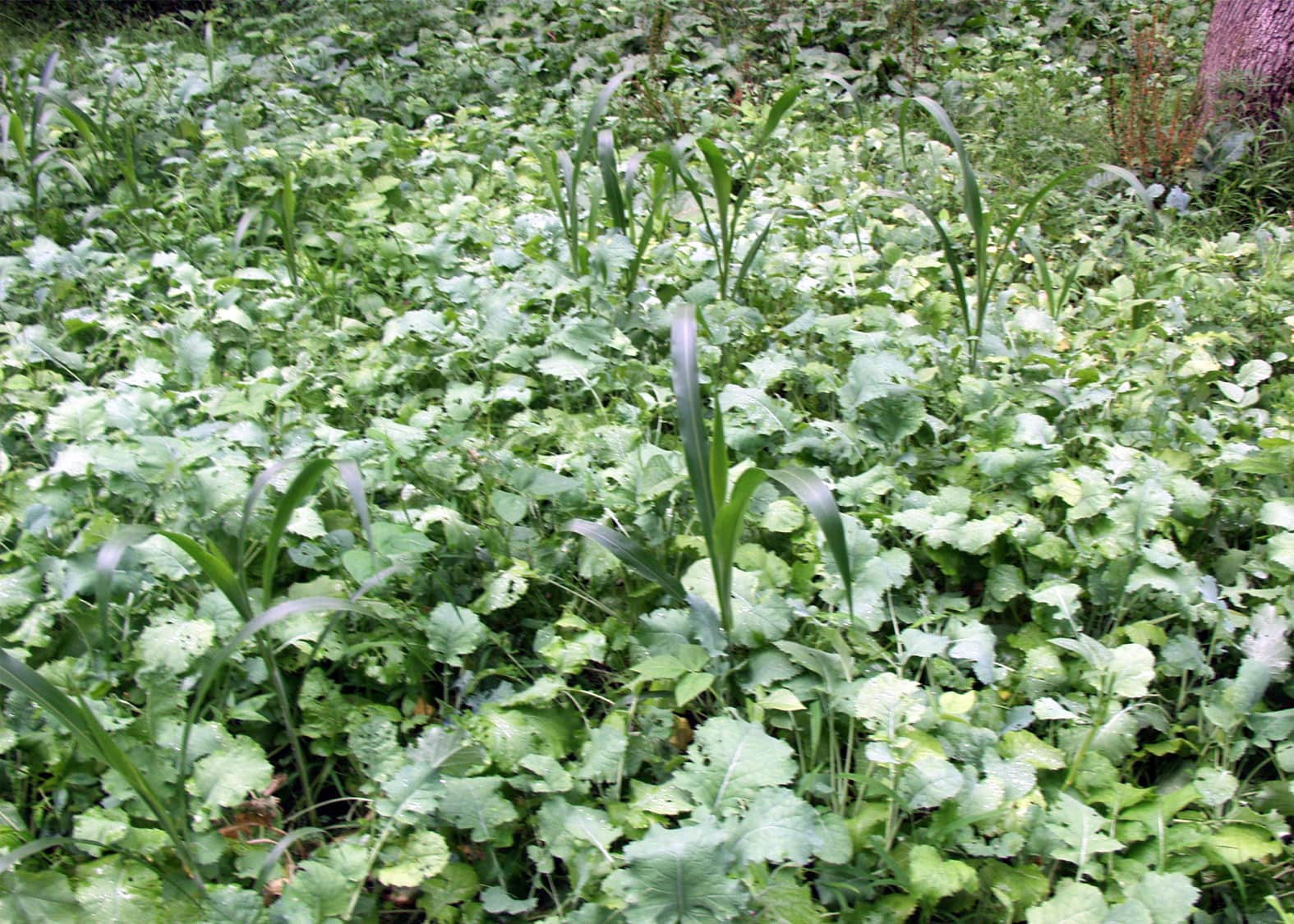Whitetail Food Plots: Honey Holes for All Acreage, Part 2
Whitetail-Food Plots 04.11.12

In part 1, I covered the basics of what factors are needed for both bigger bucks and successful food plots. So here we are ready to plant our food plots. As far as the seed you may want to consider, I want to share with you what works in my food plot. Plant two types of crops in strips up to 15 feet wide, side- by-side and covering the length of the plot. These are what I call my residence crop and my kill crop.
The residence crop is the one that deer will devour almost entirely by the beginning of September. This crop is made up of martin grain (a high-end sorghum plant), climbing beans such as eagle forage, chicory and a variety of clovers. When you visit your plot to fertilize and check your trail cam, you will notice you are having more encounters with deer. Why? Because they are now bedding within close proximity to your “candy store”. You have something they want, and they’re not going to be far off.
The kill crop, on the other hand, becomes the focus of deer during the colder months. That is early and late fall, and right on through the winter months. The reason is because you have planted brassicas, sweet beets and wildlife turnips, and as the frost hits these now-mature plants, their sugar content rises significantly, making them more palatable.
Another FYI factoid, try to keep the protein content of your plot in the 18% + range. This can add substantial body mass and antler growth in the upper 20 inch area. Remember what we discussed in part 1 – the genetics of the herd will play a big part with the size of bucks in both rack and body size. What the food plot will do is maximize their potential.
 Now that you have an idea of what to plant (remember these are only guidelines), let’s discuss how we set up the food plot. I like to put my plots in the thickest part of the woods, where big bucks hide. I try to place my plots running east to west, this will give maximum exposure to the sun even when surrounded by trees; and as mentioned, I plant multiple crops in strips. I also like to create ‘brush piles’ on the north side of the plot (the wind is predominately out of the southwest), just about 10 yards into the woods. This gives the deer an area to bed with cover, but right next to your plot. You might also want to consider a few acres in that same area to be “off limits” to hunters. The deer will use this as a sanctuary and go there when you bump into them heading to your stand. Like I stated earlier, they’ll be back, you have that “candy store”, remember?
Now that you have an idea of what to plant (remember these are only guidelines), let’s discuss how we set up the food plot. I like to put my plots in the thickest part of the woods, where big bucks hide. I try to place my plots running east to west, this will give maximum exposure to the sun even when surrounded by trees; and as mentioned, I plant multiple crops in strips. I also like to create ‘brush piles’ on the north side of the plot (the wind is predominately out of the southwest), just about 10 yards into the woods. This gives the deer an area to bed with cover, but right next to your plot. You might also want to consider a few acres in that same area to be “off limits” to hunters. The deer will use this as a sanctuary and go there when you bump into them heading to your stand. Like I stated earlier, they’ll be back, you have that “candy store”, remember?
What do you do with the information you’ve acquired up to this point? My suggestion is go to your nearest dollar store and pick up a pocket size ‘composition’ notebook and start a diary or journal about your food plot. I’ll cover what to document and why in part 3.
Again, I would like to mention, my seed of choice: INVITE X-Tream Wildlife System. Located in Ohio, this seed is developed by hunters for hunters. Check them out at : www.INVITEFPF.com. Should you have any questions, you can E-mail me at whitetail-foodplots@roadrunner.com. You can also find me on Twitter @foodplotsPaul. As a footnote, I want to let you know my website is under construction, but will be found at www.whitetail-foodplots.com. Click here for part 3, you can backtrack to part 1 by clicking here.


